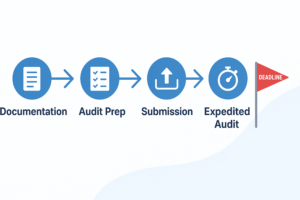Some organizations think about taking the leap into global reporting for sustainability but are not sure where to begin or are unfamiliar with much of the jargon. Other companies are interested in helping with the sustainability movement but have a hard time navigating the plethora of resources available online. And still other organizations do not necessarily want to spend a sizable amount of money hiring an expert in the area or consulting a firm that specializes in sustainability when it is unable to determine the full return on investment until after the assessment is completed.
So where to start? Let’s begin with some basic acronyms and definitions:
Global Reporting Initiative (GRI): an independent, international organization aimed at helping organizations take responsibility for their economic, environmental and social impacts through reporting.
GRI Sustainability Reporting Standards (GRI Standards): standards used by organizations to report their impacts on the economy, the environment and/or society.
GRI 101 Foundation: the starting point for using GRI Standards which outlines the Reporting Principles for defining report content and quality.
GRI 102 General Disclosures: provides context such as information about the organization’s profile, strategy, ethics, governance, stakeholder engagement and reporting.
GRI 103 Management Approach: used for each material topic to provide a narrative explanation of why the topic is material, the associated impacts, and how these impacts are managed.
Material Topic: topic that reflects an organization’s significant economic, environmental and social impacts.
GRI 200: topic standard specific to the economy.
GRI 300: topic standard specific to the environment.
GRI 400: topic standard specific to society.
For example, the Material Topic for the environment, GRI 300, outlines specific requirements for reporting. These requirements include:
- Identification of a number and title of disclosure. For example, Disclosure 300-1 Reduction of Greenhouse Gas Emissions.
- Identification of reporting requirements leading to the reduction the disclosure. For example, for greenhouse gas emissions, an organization might report on the following:
The amount of reduction of carbon dioxide, methane, and nitrous oxides in metric tons.
The type of energy included in the reductions (fuel, electricity, heating, cooling, etc.). The baseline for calculating reductions, including the rationale.
Any standards, methodologies, assumptions and/or calculation tools used.
Diving deeper into the GRI Standards reporting, there is a common theme among them that includes the management approach, topic-specific disclosures, and reporting recommendations.
We’ll start by addressing GRI 303: Water and Effluents. This standard requires the following:
- Management approach disclosures for water-related impacts, considering the local context of water use and importance of stewardship.
- Interactions with water as a shared resource, including:
- Interaction with water (withdrawal, consumption, discharge)
- Water related impacts, including assessments, timeframe and methodologies
- The ways in which water related impacts are addressed, including stakeholder engagement
- Setting water related goals and targets
- Reporting recommendations:
- Water use across the organization’s value chain
- The listing of specific catchments that cause significant water related impacts
Another standard to consider is specific to emissions, GRI 305: Emissions. This standard requires the following:
- Management approach disclosures
- Topic-specific disclosures, including:
- Direct GHG emissions
- Energy indirect GHG emissions
- Other indirect GHG emissions
- GHG emissions intensity
- Reduction of GHG emissions
- Emissions of ozone-depleting substances (ODS)
- Nitrogen oxides (NOx), Sulfur oxides (Sox) and other significant air emissions
- Reporting recommendations:
- Comprehensive breakdown of air emissions by facility, country, source type, activity
A third GRI standard for environmental consideration is GRI 306: Effluents and Waste. This standard requires the following:
- Management approach disclosures
- Topic-specific disclosures, including:
- Total volume of water discharges by destination, quality of the water, and reuse, including the standards, methodologies, and assumptions used
- Waste by type and disposal method including hazardous waste, non-hazardous waste, and waste disposal methods
- Reporting recommendations:
- Noting discharge in terms of total volumes of effluent using standard parameters consistent with the pertinent organizational sector
Another GRI Standard specific to environmental compliance is GRI307 Environmental Compliance. This standard requires the following:
- Management approach disclosures
- Topic-specific disclosures, including non-compliance with applicable environmental laws and regulations, including:
- Significant fines and/or sanctions for noncompliance
- Identification of non-compliance with environmental laws and/or regulations
- Reporting recommendations:
- Including international, national, state and local treaties, laws and/or regulations, voluntary agreements with regulatory authorities, dispute cases, and noncompliance related to spills
Now that the foundation has been established, it should be a piece of cake to gather all the information for environmental reporting, right? If it doesn’t seem that simple, you are correct. It isn’t. Determining NOx, SOx, Particulate Matter, and other air emissions is often dependent upon emission factors specific to the industry. Researching various standards, methodologies, and basic assumptions as well as the numerous calculation tools available can be challenging and time consuming.
Reporting on environmental laws and regulations requires a deep dive by someone both familiar with the industry, relevant terminology and the applicable requirements. For example, what does “standard parameters consistent with the organizational sector” mean? Only someone who has worked in water quality compliance in that specific industry and in that specific state might know that it is referencing parameters such as zinc, copper and total suspended solids. As in all phases of reporting and compliance, proper and timely regulatory research is key.
Navigating the sustainability reporting arena is complex, but with a sound, process-based approach, it can be effectively established, implemented, and achieved.
Freer Consulting is a highly experienced provider of https://www.freerconsulting.com/environmental-compliance-consultants
Cross-posted at SCCE-HCCA Compliance & Ethics Blog







